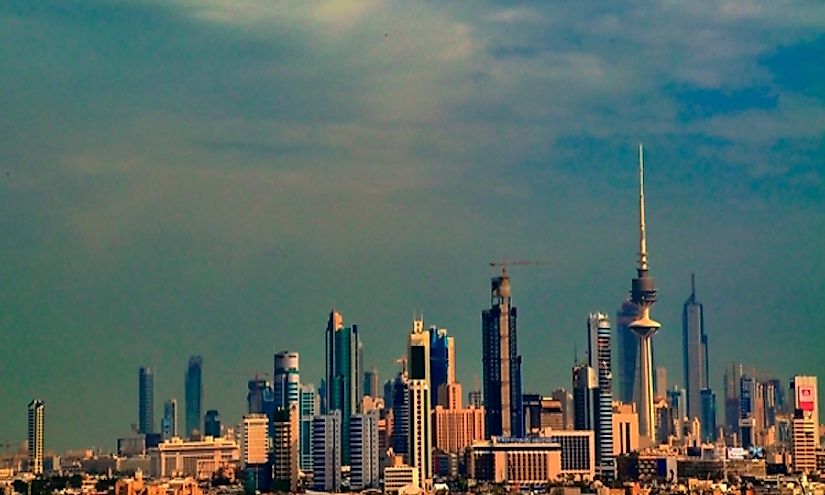Biggest Cities In Kuwait

Kuwait
Kuwait is located at the northernmost tip of the Persian Gulf and shares borders with Saudi Arabia and Iraq. It encompasses a total area of 6,880 square miles and is home to 4.2 million people. Of these individuals, 70% are from foreign countries. The ethnic makeup of this country is 60% Arab, 37.8% Asian, and 1.9% African. The majority of Kuwaitis live in urban areas. This article takes a look at the most populated cities in Kuwait.
Biggest Urban Areas In Kuwait
Al Ahmadi
Al Ahmadi is the most populated city in Kuwait with a population size of 637,411. It is located along Kuwait's eastern coastline and serves as the capital of the Al Ahmadi Province. This city is relatively young, founded in 1946 after the discovery of oil. The first immigrants to live here was British and Indian. City planners based its design on American urban areas.
Headquarters for the Kuwait Oil Company and the Kuwait National Petroleum Company are located here. The biggest industry here is oil refinery. The city is known for being the greenest city in Kuwait.
Hawalli
Hawalli is the second most populated urban area in Kuwait. It is one of the several areas that make up the Hawalli Governorate and has a population size of 164,212. During and after the Gulf War, many of the city’s Palestinian residents left. Today, it is home to a large Arab population.
This city is home to two international schools, the American School of Kuwait and the New Pakistan International School. Additionally, the Qadsia football stadium is located here, which is the most important in Kuwait. Hawalli is a large commercial center with a large mall and several types of stores.
Al Farwaniyah
The third most populated area in Kuwait is Al Farwaniyah, with a population of 86,525. It is located in the Farwaniyah Governorate, the most populous in the country, and about 6.5 miles from Kuwait City, the nation’s capital.
Al Farwaniyah is one of the major residential areas of Kuwait and houses the largest number of foreign immigrants. Men far outnumber women here, which is true of the entire country.
Other large cities located in Kuwait include Al Fahahil (68,290), Kuwait City (60,064), Ar Riqqah (52,068), Al Manqaf (39,025), Al Jahra (24,281), Al Fintas (23,071), and Janub as Surrah (18,496).
Environmental Threats
The biggest environmental threats in Kuwait are rooted in its principal industries:oil exploitation and refinery. These industries have contributed significantly to water, air, and soil pollution. In January of 1991, Iraq set fire to the oil fields located here. These fires burned until April with the last fire being extinguished in November of the same year. The smoke from the fires reached between 10,000 and 20,000 feet into the atmosphere. Additionally, the smoke blocked between 75% and 80% of the sun’s rays, leaving the country draped in darkness and lowering temperatures between 4° and 6° celsius.
The oil wells also leaked between 300,000 and 400,000 barrels a day for approximately 10 months. Estimates suggest that the leaks contaminated 40 million tons of sand and soil. This combined with the soot from the fires created a hard layer of a substance, like a mix of tar and concrete, that has covered 5% of Kuwait’s property.
This pollution has resulted in damage to agricultural production and biodiversity of the country. The oil production has also led to climate change with an overall increase in temperature 1.6° celsius by 2035, increasing instances of drought and dust storms, and a rise in sea level in coastal areas.
Which Are The Urban Areas In Kuwait?
| Rank | City | Population |
|---|---|---|
| 1 | Al Ahmadi | 637,411 |
| 2 | Ḩawallī | 164,212 |
| 3 | Al Farwānīyah | 86,525 |
| 4 | Al Faḩāḩīl | 68,290 |
| 5 | Kuwait City | 60,064 |
| 6 | Ar Riqqah | 52,068 |
| 7 | Al Manqaf | 39,025 |
| 8 | Al Jahra | 24,281 |
| 9 | Al Finţās | 23,071 |
| 10 | Janūb as Surrah | 18,496 |







